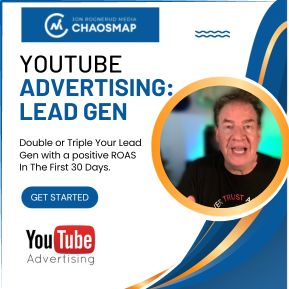In this post, you’ll learn “How To Build Strategies To Create High Return Event Registrations For Associations – From Annual Conferences To Webinars & Workshops!”
Timely, profitable and predictable event registrations is the most crucial factor for any successful event, whether physical, online, or hybrid.
Your association could have done everything right – from scheduling the more practical venue to having reputable speakers & guests lined up. You have employed the premium vendors in your industry and provided content that educates, informs and inspires action.
Still, if your association does not have the key strategies to drive traffic and get members to sign up and register for member events, you will have low numbers in attendance.
Working Strategies to Increase Registration for Online & Offline Events
HOT TIP: Use Paid Media Event Marketing to Boost Registration Rates and Speed to Market
Regardless of the type of event you are planning, your event’s registration process always has to start with event promotion.
Who attends an event if they do not know what it is and what it is for? That’s where event marketing comes into play.
You have to invest in promoting your event out there. This involves calculated approaches to strategically raise awareness among your target audience and over time. You must have months to prepare.
By doing this, you will have a higher chance of persuading your audience to register, pay and thereby increasing the revenue you make from ticket sales.
Organic (SEO) strategies are a longer term play and should be included in your overall marketing.
To ramp up faster and measure results and KPI’s – leveraging Google, LinkedIn, YouTube and Meta ads hold the keys to success.
Running ads to a warm (previously acquired customer match lists) audience and retargeting those visitors based on patterns and key attributes will result in higher ROI.
It’s also important to continually drive top of the funnel leads (cold traffic) to keep the pipeline full and expand awareness of your event and brand.
Some of these approaches include:
A. Invest in your event website’s design and layout
Your website and landing pages have to be professional and of high quality. It introduces your potential attendees to your event and is one of the factors that will sway their decision on whether or not they will attend your event.
Ensure it clearly illustrates that the event is worth the time and money to attend. The pre-click should have enough data to get them there in the first place. This is what we call “creative positioning” and “indoctrination”.
B. Invest in content marketing
This involves drawing in, engaging, and retaining the target audience through numerous media forms, including e-books, whitepapers, podcasts, videos, and blog posts.
Invest in content that you believe will be of interest to your potential customers, then post it everywhere they might come across it. Make sure to leverage previous data points (review in Google Analytics) to measure what worked well in the past as well.
Ensure you include a backlink pointing to your registration page and form in your event website so those interested can quickly complete their transactions or get further details.
(Tip: make sure to have proper tracking in place so you can optimize accordingly. We use Google Analytics 4)
C. Leverage social media marketing
People access information by scrolling and tapping their screens. We only have seconds to grab their attention. There are many social media platforms that billions of people sign in to every day for various reasons.
Your audience is there, so make sure to place your relevant content in front of them.
Focus on those platforms your target audience uses. Provide a consistent flow of information while educating and also providing some level of entertainment.
One helpful rule to follow is the 4:1:1.
This generally means that for every six posts you share, four should be educational, one should gently promote your event, and one should aggressively promote it.
(TIP: As your event get closer, build in more urgent and frequent messaging and increase pricing for late registrants)
D. Leverage email marketing
According to studies by Markletic, 76% of marketers show that email marketing is the most effective technique to increase event registrations.
Emails should be helpful and educational with action driven subject lines and CTA’s (call to action).
It is also recommended to personalize each email topic according to the stage of the customer journey that each potential attendee is at.
E. Follow-up is Crucial
An example: At their virtual conference, ACOFP ’20 Virtual, in 2020, the American College of Osteopathic Family Physicians had a 90% attendance rate. And, 944 of the 1,050 individuals who registered showed up.
They used a clever and aggressive follow-up association marketing strategy as their primary tactic.
These numbers were obtained through many emails, texts, and phone calls to registrants who had not returned the emails.
Of course, there’s a fine line between this and coming out as to aggressive.
The key lies in executing and implementing the association marketing campaign with the receiving person in mind.
It is only seen as “spammy” if it is addressed to the wrong audience. The right audience with relevant messaging will see this as the motivation to sign up and attend the event.
F. Make the Most of Your Sponsors, Speakers, and Attendees
Most of you have a social media presence on various platforms. That by itself is important in event marketing for associations.
You may go a step further and request the speakers and those attendees who have confirmed their attendance to post about the event.
Some might see this as exploiting the speakers and attendees. But if they are excited about the event, why don’t you use it to your advantage and use it for event marketing for associations?
(TIP: You may review any legal verbiage included so there is no confusion about what can be used, what’s published and what timelines and frequencies apply.)
Additionally, if appropriate, you may try to persuade influential people in the business to promote your event on social media.
Influencer marketing concepts still apply even if you’re not directly selling a product or service.
To do this, make original visuals for your presenters to post online, organize your attendees into private groups (e.g. LinkedIn) and come up with a relevant hashtag that they can use in their posts.
Tips on Streamlining the Registration Process
1. Communicate a sense of urgency. For instance, use phrases like “Time is running out!”, “Seats are limited”, “Only 10 left”, “2 days remaining before registration closes” etc.
Doing this urges the potential attendees to take action before it’s too late and capitalizes on the fear of missing out. (TIP: FOMO strategies work well in most cases)
2. Keep questions at a minimum, but make an FAQ available for most common questions. Short, easy to follow registration forms are optimal.
We also like to test (A/B tests) short form and longer form.
3. Leverage early registrations. Give first-wave registrants exclusive discounts – ranging from 10% to 25% off regular pricing. (TIP: Use countdown timers on your landing pages)
4. Diversify pricing. With a tiered price structure, your target market has more options. You may include a two-pay option. Guarantees can also be leveraged to position them for a good return on their investment.
5. Use user-friendly registration software and tools to help customize every aspect of the experience. Employ analytics to track ticket sales, measure progress, and adjust where needed.
6. Personalize follow-ups for incomplete signups and use paid media to retarget in an omni-channel manner.
Final Thoughts
Well planned and executed event marketing for associations is vital for a successful event.
With key strategies as suggested above, an association can drive traffic and get members to sign up and register for paid events with consistency and predictability.
To learn more, join our free member network here.
Jon Rognerud and Chaosmap work with Fortune 500 companies, associations and entrepreneurs to create digital traffic strategies that scale up members, customers, leads and sales with profitable returns. Mr. Rognerud wrote a best-selling book (Buy On Amazon), “The Ultimate Guide To Optimizing Your Website” (Entrepreneur). Connect directly here.







